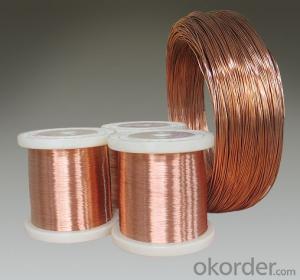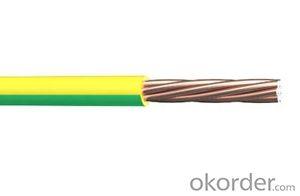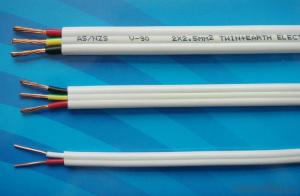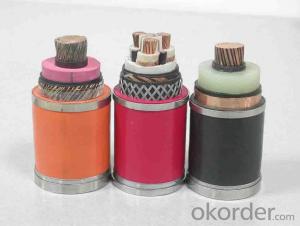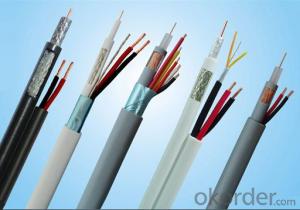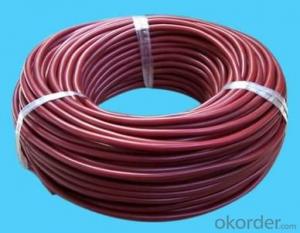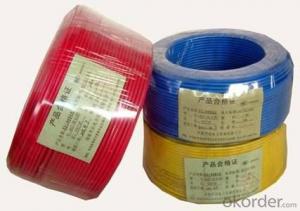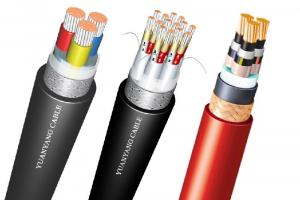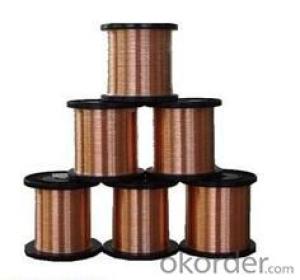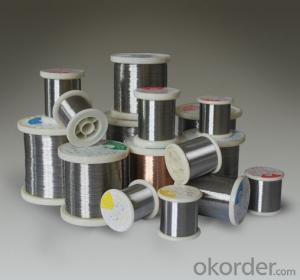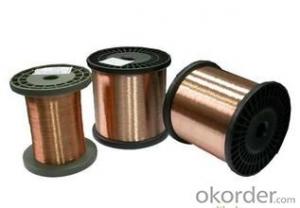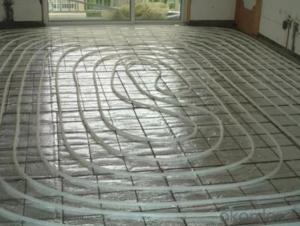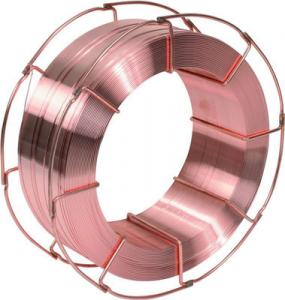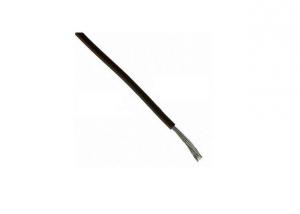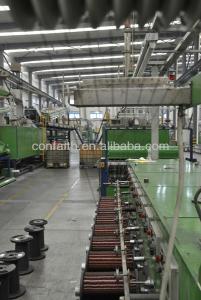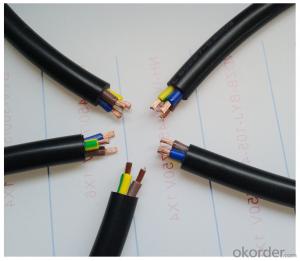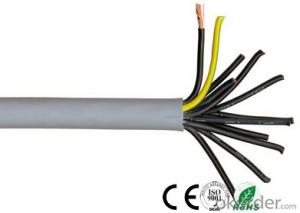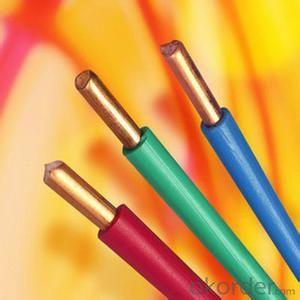Copper-based low resistance heating alloy wire
- Loading Port:
- Shanghai
- Payment Terms:
- TT OR LC
- Min Order Qty:
- 100000 m
- Supply Capability:
- 1000000 m/month
OKorder Service Pledge
OKorder Financial Service
You Might Also Like
Thermocouple Wire
A Thermocouple is a temperature measuring device consisting of two conductors of dissimilar metals or alloys that are connected only at the ends. When the ends are at different temperatures a small voltage is produced in the wire that can be related directly to the temperature difference between the ends. If the temperature at one end is known, the temperature at the other end can be determined.
Application:
Thermocouple wire or extension grade wire is recommended to be used to connect thermocouples to the sensing or control instrumentation. The conditions of measurement determine the type of thermocouple wire and insulation to be used. Temperature range, environment, insulation requirements, response, and service life should be considered.
What do we have?
Thermocouple wire ( extension/compensation/compensating):
Type: K, T, N, E, J, L, B, R, S
Insulation or jacket: PVC, Telflon, PFA; Silicon rubber, Fiberglass, Quartz Fibre.
Sheild: Tin-coated copper braid/Stainless steel braid sheild.
Calibration Type Characteristics
Type J (Iron vs Constantan) is used in vacuum, oxidizing, inert or reducing atmospheres. Iron element oxidizes rapidly at temperatures exceeding 1000ºF (538ºC), and therefore heavier gauge wire is recommended for longer life at these temperatures.
Type K (CHROMELvs ALUMEL) is used in oxidizing, inert or dry reducing atmospheres. Exposure to vacuum limited to short time periods. Must be protected from sulfurous and marginally oxidizing atmospheres. Reliable and accurate at high temperatures.
Type T (Copper vs Constantan) is used for service in oxidizing, inert or reducing atmospheres or in vacuum. It is highly resistant to corrosion from atmospheric moisture and condensation and exhibits high stability at low temperatures; it is the only type with limits of error guaranteed for cryogenic temperatures.
Type E (CHROMELvs Constantan) may be used in oxidizing, inert or dry reducing atmospheres, or for short periods of time under vacuum. Must be protected from sulfurous and marginally oxidizing atmospheres. Produces the highest EMF per degree of any standardized thermocouple.
Type N (Nicrosilvs Nisil) is used in oxidizing, inert or dry reducing atmospheres. Must be protected from sulfurous atmospheres. Very reliable and accurate at high temperatures.
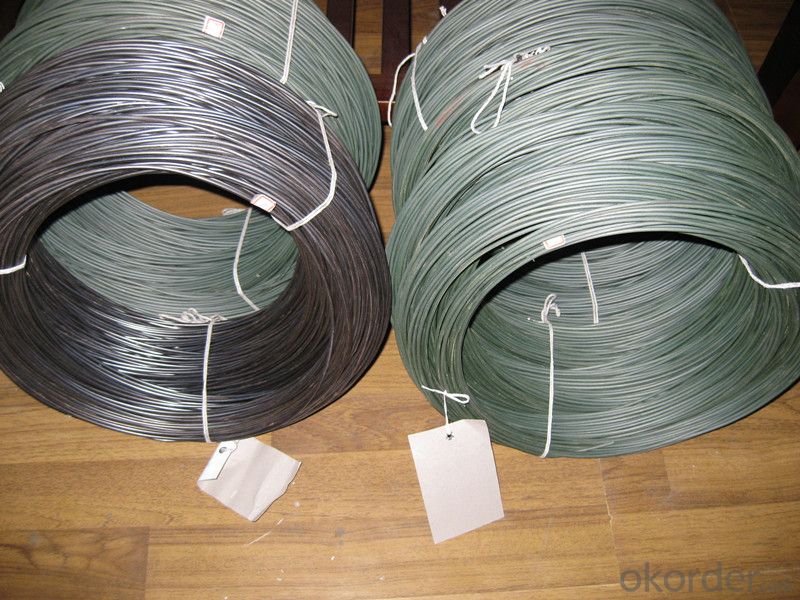
Do you provide free samples?
Yes, we can provide a free sample for testing, If we have sample in stock, The quantity based on the material type, The buyer should bear all the shipping costs.
Please feel free to send us a inquiry and we are looking forward to cooperating with you!
Before you send us a inquiry, please confirm the following information
1. Alloy grade
2. Dimensions of the alloys
3. Surface requirements
4. Size tolerance requirement
5. Quantities
6. Package request
7. Specific end use
8. Other information that may be useful in supplying the most suitable products
| Color code & initial calibration tolerances for thermocouple wire: | ||||||
| Thermocouple Type | ANSI Color Code | Initial Calibration Tolerances | ||||
| Wire Alloys | Calibration | +/- | Overall | Temperature Range | Standard | Special |
| Conductor | Limits | Limits | ||||
| CHROMEL(+) vs. | K | Yellow/Red | Brown | -200° C to -110° C | ± 2% | ± 1.1° C |
| ALUMEL(-) | -110° C to 0° C | ± 2.2° C | ± . 4% | |||
| 0° C to +285° C | ± 2.2° C | |||||
| FB-FB-SSB Physical Properties | ||||||
| Characteristics | ||||||
| Specific Gravity | Insulation | Overall | ||||
| Tensile Strength; psi (min) | 2.54 | 2.54 | ||||
| Elongation; %(min) | 250, 000 at 1000& deg; F(537° C ) | 250, 000 at 1000& deg; F(537° C ) | ||||
| Minimum Bend Radius | 4.8 | 4.8 | ||||
| Abrasion Resistance | 5x O. D. | 10x O. D. | ||||
| Cut Through Resistance | Good | Good | ||||
| Moisture Resistance | Very Good | Excellent | ||||
| Solder Iron Resistance | Good | Good | ||||
| Service Temperature | Excellent | Excellent | ||||
| Flame Test | 260° C continuous 343° C single exposure | 260° C continuous 537° C | ||||
| single exposure | ||||||
| Non-flammable | Non-flammable | |||||
| Thermocouple variety and index | Measurement range C | |
| Variety | Index | |
| PtRh30-PtRh6 | B | 600~1700 |
| PtRh13-Pt | R | 0~1600 |
| PtRh10-Pt | S | 0~1600 |
| NiCr-NiSi | K | -200~1300 |
| NiCr-CuNi (constantan) | E | -200~900 |
| Fe-CuNi (constantan) | J | -40~750 |
| Cu-CuNi (constantan) | T | -200~350 |
| NiCrSi-NiSi | N | -200~1300 |
| NiCr-AuFe0.07 | NiCr-AuFe0.07 | -270~0 |
- Q: For simplification, I am adding 3 20amp new outlets (OUTLET A, OUTLET B, OUTLET C)Anything below sound wrongAll Hot(Black wires) go on brass screws (Right Side of outlet)All Neutral(White wires) go on silver screws (Left Side of outlet)Romex Hot Neutral Path.Electric Panel to top screws on Outlet ABottom screws on Outlet A to top screws on Outlet BBottom screws on Outlet B to top screws on Outlet CBottom screws on Outlet C empty.Internal OutletsI am using blue pvc single gang boxes so for the ground add ground pigtails to the ground screw on the outlet and twist pigtail, incoming and outgling ground together with green twistcap.For Exterior Outlets I am using metal boxes. Should I pigtail the ground to the ground screw on the metal box or to the ground screw on the outlet?Any problems, suggestions, etc?thanks
- both ways are in accordance to the electric code the only mistake is on the grounding, both the box and the ground line should be wired together.
- Q: Cant find a haynes manual and the facvtory manuals are too expensive. I'm looking for a downloadable electrical diagram for a 1984 300sd (126)
- Mercedes makes it difficult to find info on their vehicles in the aftermarket world. Good luck. What system are you needing the wiring diagram for?
- Q: Does anyone know where I can get a good price on 200 amp copper wire (underground to hook up electricity to a doublewide. Hot#2 Copper, Ground #4Copper and Neutral #2 Copper. 330-350 feet Thanks
- At that distance, you would be better with aluminum wire. BUT: #2 copper is 0.156 ohm/1000 feet. You have 700 feet, so the is a resistance of 0.11 ohms. At 200 amps, that is a drop of 22 volts, much too high. Requirement is 5% drop, and at 120 volts, that is 6 volts. #2 copper would be good for 55 amps only at that distance. .
- Q: Electrical supplies
- For new house wiring ? Probably not now. At one time house wiring was bare - it had no continuous insulation and was strung individually on glass-like support posts. That system had a name which I cannot remember. Some may be yet by existing today if the residence has not been inspected. Then wires were individually insulated with paper or cloth wrap which will deterrioriate . Those are also to be found still in service in houses built in the 1920 -30s. I have seen it. When plastic became commonly available the duration of the continuous wire insulation greatly improved and modern wire insulation could be implied to have a reasonably unexpirable duration in residential and commercial service. However, it is not so stamped because of factors beyond the reasonable control of the manufacturer.
- Q: i have a wired xbox 360 controller and it had a shortage in it . so i fix the shortage now the controller wont come on.i got me a new usb breakaway cord and it still wont work.how do i fix it without buying a new one
- well depends on how you shorted it out now this works for a lot of corded things like keyboard wires electrical wires your gonna want to go to the inside of the wire where there shood be three wires positive negative and copper if any of these are damaged in the slightest your gonna want cut the wire in half and take their inner wires and twist both ends of the cut wire and twist them together and wrap electrical tape around them do this for each wire now only do this if an other process dosnt work or your desperate granted it does work i personally have done this with electrical cords mouse wires printer wires this process will get the electrical current flowing again so this may work with you corded controller again depends on what you did to short it out now here's the simple answer it may jus be old all controllers have an expiration date in some way hoped i helped
- Q: Can two wires be connected directly like wires?
- It is best not to connect, if it is connected, you can use the network module, the two lines connected, just like from the wall of the network panel to connect the same network cable. Do not exceed 100M.
- Q: Going by the chart of wire sizes and how many amps different sizes can handle, here's my question. I see a # 10 guage wire can hold 30-35amps. However, can it hold more amps if it were being used for the neutral?
- Your hot and neutral need to be the same size wire, your ground wire can be smaller.
- Q: I recently came across a big spool of rubber/plastic insulated electrical wiring. I cut into the metal with my knife and saw that it had an orange tint to it. I was excited because I thought it was copper but after I burned it and took it to a scrap yard the guy there stuck a magnet to it and said it wasn't copper. because it stuck to the magnet. So it's been about two months now and there's orange rust on it like Iron. but I know what steel wire looks like. This has that distinct copper orange in it but it's magnetic. Help me. I'm so angry and confused.
- its probably worth more than its weight in metal, question is, can you sell it anywhere other than scrapyard, if its heating element as suggested then perhaps you can, find an ohmmeter and measure end to end, it should have significant resistance if its an heating element. but if you burned insulation off the entire spool then you probably made it worthless, even scrapyard might pay you very little if its some unknown alloy
- Q: I have an engine, frame etc but cannot get my hands on electrical wiring. Ive tried E-Baybut no luck.
- i would keep check OKorder. i think places like bikebandit sell the parts separately, but it can be expensive. you can also check your local bike salvage yard?
- Q: As we know the earth wire takes no current or just a small amount of leakages current, why we should use same size as live or neutral wire in a power system??
- Rule of thumb is that the earth wire should be half the csa of the phase conductor. This ensures that it can carry the maximum fault current that could occur at that point for sufficient time for the protective device to operate.
Send your message to us
Copper-based low resistance heating alloy wire
- Loading Port:
- Shanghai
- Payment Terms:
- TT OR LC
- Min Order Qty:
- 100000 m
- Supply Capability:
- 1000000 m/month
OKorder Service Pledge
OKorder Financial Service
Similar products
Hot products
Hot Searches
Related keywords
